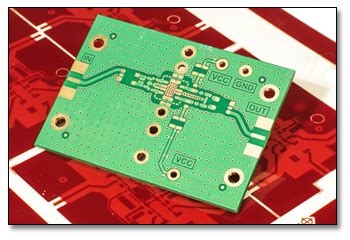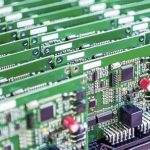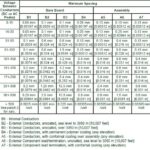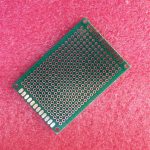What is PCB Prototyping?
PCB prototyping is the process of fabricating a small number of printed circuit boards, usually 1-100 pieces, to test and validate a design before committing to a larger production run. Prototypes allow engineers to:
- Verify the functionality and performance of the circuit design
- Test the physical fit and layout of components
- Identify and fix any design issues or bugs
- Demonstrate a working product to stakeholders or customers
Prototyping is an iterative process, and designs often go through multiple prototype rounds before being finalized for production.
Benefits of Rapid PCB Prototyping
Rapid PCB prototyping offers several key benefits compared to traditional prototyping methods:
-
Speed – Quick-turn prototyping services can fabricate and deliver PCBs in as fast as 24 hours, allowing faster design iterations and shorter product development cycles.
-
Cost Savings – Getting prototypes made quickly helps identify design issues early, reducing the risk of costly mistakes or redesigns later in the development process. Many prototyping services also have low minimum order quantities and provide volume discounts.
-
Design Flexibility – Rapid prototyping supports a wide range of PCB specifications, including multiple layers, materials, sizes, surface finishes, and component types. This allows testing the PCB in its final form.
-
Improved Quality – Prototyping services use advanced manufacturing processes and strict quality control to ensure prototypes meet the same standards as production boards, giving an accurate representation of the final product.
PCB Prototyping Process
The rapid PCB prototyping process typically involves the following steps:
-
Design Preparation – The customer prepares the PCB design files, Bill of Materials (BOM), and assembly instructions. Files are checked using design rule checks (DRC) and validated for manufacturing.
-
Quotation and Ordering – The design files are uploaded to the prototyping service website or sent for quotation. An online calculator or sales representative provides a quote based on specifications like quantity, layer count, size, etc. The customer places the order and provides payment.
-
Fabrication – The prototyping facility fabricates the PCBs according to the design files, using a combination of automated and manual processes. Key steps include:
- Inner layer printing and etching
- Lamination of layers
- Drilling of vias and through-holes
- Outer layer printing and plating
- Solder mask and silkscreen application
- Surface finish (HASL, lead-free HASL, ENIG, OSP, etc.)
-
Electrical testing and inspection
-
Assembly (Optional) – If assembly service is ordered, the facility will source components according to the BOM and assemble them onto the fabricated PCB using SMT and/or through-hole processes. Assembled boards undergo additional inspection and testing.
-
Shipping – The completed PCB prototypes are packaged and shipped to the customer via courier or express shipping service, often with tracking information provided.

Key Technologies for Rapid PCB Prototyping
Several advanced manufacturing technologies enable rapid PCB prototyping services to achieve fast turnaround times and high quality standards:
-
CAD/CAM Software – Computer-aided design and manufacturing software automates many steps of the PCB fabrication process, from design file importing and panelization to generating CNC machine instructions for drilling, routing and soldermask.
-
Direct Imaging (DI) – Unlike traditional photolithography which uses photo tools, DI uses lasers to directly transfer the image of the circuit pattern onto the photoresist. This eliminates the time and cost of making photo tools, enabling faster setup and turnaround.
-
Laser Drilling – UV lasers can rapidly and precisely drill microvias and blind vias in PCBs, supporting HDI designs and improving manufacturing efficiency compared to mechanical drilling.
-
Automatic Optical Inspection (AOI) – AOI systems use high-resolution cameras and advanced algorithms to inspect PCBs for defects like shorts, opens, missing components, and solder issues. This allows catching quality issues early in the prototyping process.
-
Flying Probe Testing – Flying probe testers use movable test probes to make contact with test points on the PCB and perform electrical continuity and isolation tests. Compared to traditional bed-of-nails fixturing, flying probe testing is faster and doesn’t require custom test fixtures, making it ideal for prototyping.
These technologies, combined with lean manufacturing principles and automated processes, allow rapid prototyping services to fabricate high-quality PCBs in a matter of days instead of weeks.
Tips for Successful Rapid PCB Prototyping
To get the best results from a rapid PCB prototyping service, consider the following tips:
-
Follow the Design Rules – Each prototyping service has specific design rules and guidelines for their manufacturing capabilities. Follow their design rules for aspects like minimum trace width/spacing, drill sizes, annular rings, and solder mask tolerances to avoid delays or issues with manufacturability.
-
Use Standard Specifications – Choosing standard layer counts, material types, surface finishes, and sizes that are common in the industry will help ensure faster turnaround times and lower costs compared to custom specifications.
-
Provide Complete and Accurate Files – Include all necessary design files in standard formats like Gerber RS-274X or ODB++. Ensure the files match the BOM and assembly drawing, and include any special instructions. Incomplete or inaccurate design data is a common cause of delays.
-
Consider Assembly Requirements – If you need assembled prototypes, choose components with standard packages and pitches that are readily available and easy to assemble. Provide a complete and accurate BOM and consider the assembly capabilities of the provider.
-
Communicate with Your Provider – Work closely with your prototyping service provider and notify them of any special requirements, deadlines, or changes to the design. Quick and clear communication can help avoid misunderstandings and delays.
Future Trends in Rapid PCB Prototyping
As electronic products continue to become more complex and development cycles shorten, rapid PCB prototyping technologies and services will continue to evolve. Some key trends to watch include:
-
Faster Turnaround Times – Prototyping services are continually pushing to reduce turnaround times, with some already offering same-day fabrication for simple designs. As processes become more automated and vertically integrated, 24-hour turnaround may become the norm.
-
More Advanced Capabilities – Prototyping services are expanding their capabilities to support more advanced PCB technologies like rigid-flex, embedded components, and 3D printing. This will allow designers to prototype a wider range of products more quickly.
-
Improved Design for Manufacturing (DFM) Tools – More sophisticated DFM software tools will help designers optimize their designs for rapid prototyping and avoid common manufacturability issues. These tools will integrate with CAD software and provide real-time feedback on design decisions.
-
Increased Automation – Rapid prototyping facilities will continue to automate more of their processes, from quoting and order processing to fabrication and inspection. This will help reduce costs, improve consistency, and accelerate turnaround times.
By staying at the forefront of these trends, engineers and designers can take full advantage of rapid PCB prototyping to accelerate innovation and bring better products to market faster.
PCB Prototyping FAQ
Q: How long does rapid PCB prototyping take?
A: Rapid prototyping services offer turnaround times ranging from 24 hours to 5 days or more, depending on the complexity of the design and the provider’s capabilities. Simple 2-layer designs can often be fabricated in 1-2 days, while complex HDI or rigid-flex designs may take longer.
Q: How much does rapid PCB prototyping cost?
A: Prototyping costs vary depending on the PCB specifications (size, layer count, materials, surface finish, etc.), quantity, and turnaround time. Some services offer prototypes starting at $50-100 for small quantities of simple designs. More complex boards or larger quantities will cost more. Many services provide online quoting tools to get instant pricing based on your specific requirements.
Q: What files do I need to provide for PCB prototyping?
A: Most prototyping services require the following files:
– Gerber files (RS-274X) or ODB++ files for each layer of the PCB
– NC drill files (Excellon format)
– Centroid (pick and place) file for assembly
– Bill of Materials (BOM) for assembly
– Assembly drawings or instructions
Some services may also accept native CAD files (e.g. Altium, Eagle, KiCad) but Gerbers are the most common and universally accepted format.
Q: What are the limitations of rapid PCB prototyping?
A: While rapid prototyping services can handle a wide range of PCB designs, there are some limitations to be aware of:
– Very large or thick boards may not be suitable for quick-turn fabrication
– Designs with non-standard materials or specifications may have longer lead times or higher costs
– Extremely fine-pitch components (<0.4mm) or BGA packages may be difficult to assemble in a prototype setting
– Prototyping may not be cost-effective for very high volumes (>1000 pieces)
It’s best to consult with your prototyping service provider to understand their specific capabilities and limitations.
Q: How can I ensure the quality of my PCB prototypes?
A: To ensure the highest quality prototypes, take the following steps:
– Follow the design rules and guidelines provided by your prototyping service
– Use standard materials, sizes, and specifications whenever possible
– Generate complete and accurate design files (Gerbers, BOM, etc.)
– Specify any critical tolerances or special requirements upfront
– Choose a reputable prototyping service with a proven quality track record
– Request first article inspection (FAI) or other quality control measures for critical designs
By working closely with your prototyping provider and following best practices for design and data preparation, you can minimize the risk of quality issues and ensure successful prototypes.
Conclusion
In today’s competitive electronics industry, rapid PCB prototyping is a valuable tool for accelerating product development and reducing time to market. By leveraging advanced manufacturing technologies and streamlined processes, prototyping services can quickly fabricate high-quality PCBs that allow engineers to test and refine their designs with confidence.
When selecting a rapid prototyping partner, look for a provider with a track record of quality, reliability, and customer service. They should offer a wide range of capabilities to support your specific design requirements, and be able to provide expert advice and support throughout the prototyping process.
By following best practices for PCB design and working closely with your prototyping partner, you can unlock the full benefits of rapid prototyping and bring innovative products to market faster than ever before. As PCB technologies continue to evolve, staying at the forefront of rapid prototyping will be key to staying competitive and delivering the cutting-edge electronic products of tomorrow.






Leave a Reply